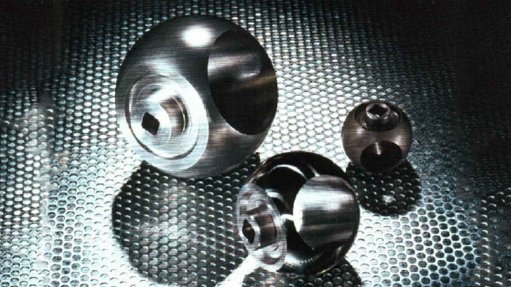
BALL VALVES Boriding provides good corrosion resistance in non-oxidising acids and can operate in temperatures of up to 800 °C
Performance tooling manufacturer and coatings specialist TD Coating Centre has included the surface-hardening process of boriding into its service offering this year, enabling the company to treat certain steel products with a low-friction, deep and very hard wear-resistant surface that does not flake off.
“With boriding, we can achieve a surface hardness value (Hv) of ± 1800 Hv (~80 Rockwell C Hardness) on these steels,” says TD Coating Centre MD Dr Jeff Ferreira.
He highlights that the boriding process provides a high surface hardness for low-alloy and mild steels. It is also one of the few processes that can surface-harden stainless steel to avoid galling – a form of wear caused by adhesion between sliding surfaces – without significantly affecting the corrosion resistance. Nickel-based alloys can also be treated to improve wear resistance.
Further, boriding provides good corrosion resistance in nonoxidising acids and can operate in temperatures of up to 800 °C.
Applications for the boriding process include pump and valve components, rotors and screws, guides and nozzles, tubes and pipe fittings, brickmaking and ground-engaging tools, as well as any other components used in mining and drilling.
TD Coating Centre sources the boriding powders from international suppliers, but has to match the method of coating to the steel and its required properties – therefore, developments are ongoing. The company is also conducting research into a salt-based process that will be better suited to certain applications. The coating of stainless steels has also received market interest and is undergoing several trials to verify the service life improvement of these parts.
“We have had significant interest from various customers, particularly those who have had problems of poor adhesion with other wear-resistant coatings to products, which are causing problems in various applications.”
Ferreira adds that customers have also been looking for a one-size-fits-all coating, and that boriding shows promise in this regard.
The benefits of boriding include a significant improvement in the wear resistance of parts. As this is a process where the hard layer is diffused into the surface, it cannot flake off. Therefore, the most important improvement has been making the part performance and life more predictable. This is a recurring issue with many surface-coating processes, where the adhesion strength of the coating on the base metal limits the performnance of the coating. Other processes cannot achieve the same hardness that boriding provides and, therefore, bonding provides better wear resistance.
While company directors receive training from European suppliers, TD Coating Centre trains its staff to familiarise them with the manufacture of components, as well as coating processes and the surface treatment of components.